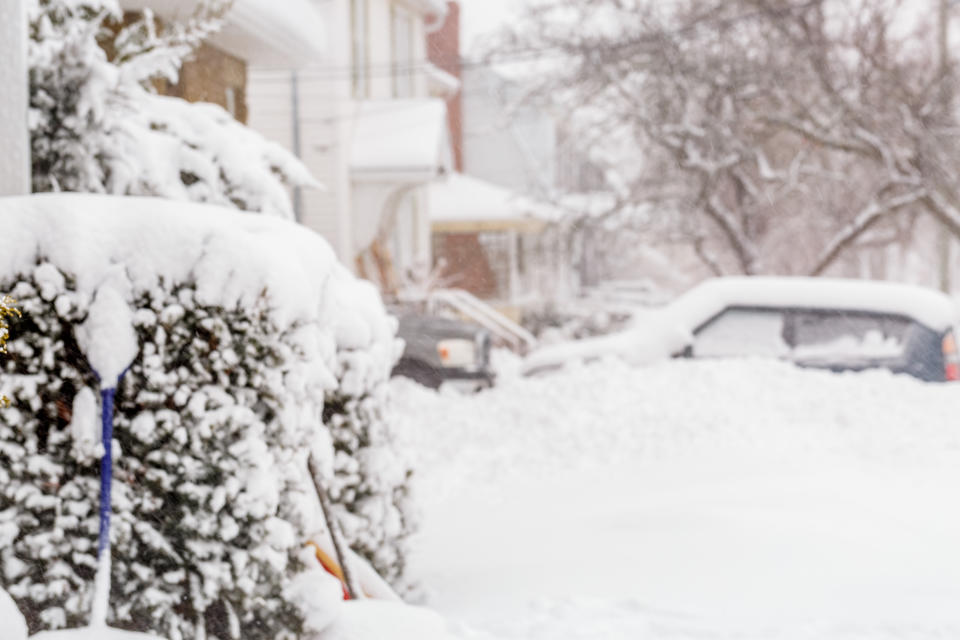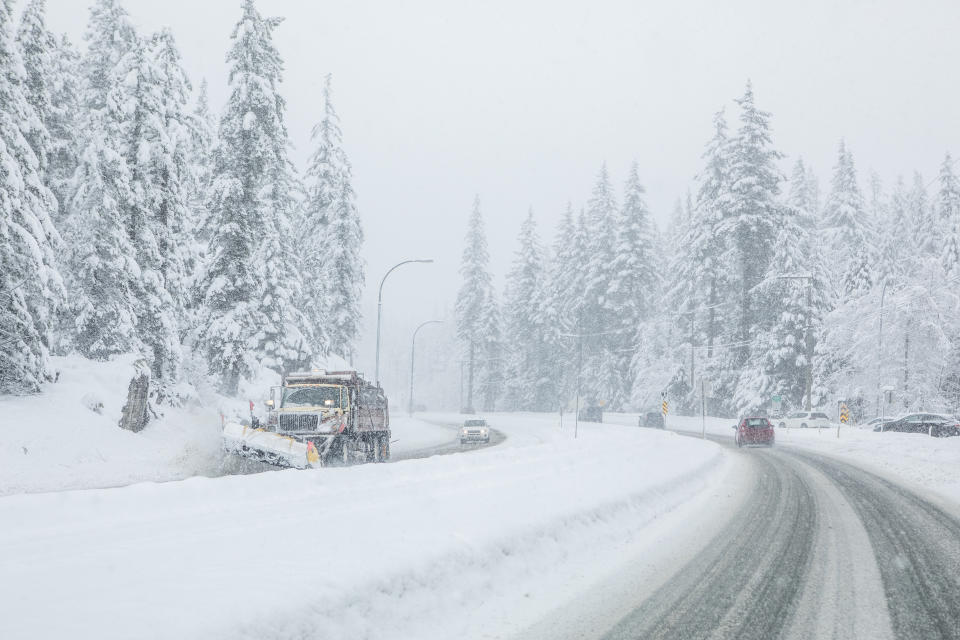Nor'easter to pound Maritimes, Quebec, Ontario with even more snow

Just when you thought winter might finally be coming to an end, another nor’easter storm is expected to slam through the East Coast.
“The storm right now is off the North Carolina coast and it’s going to rapidly strengthen tonight as it turns northeastward,” Brett Anderson, senior meteorologist with AccuWeather told Yahoo Canada News. “We think probably by tomorrow afternoon, the centre of the storm will be basically due south of Yarmouth, Nova Scotia.”
Anderson says the storm is going to be “very intense” with heavy precipitation and strong winds. AccuWeather expects the snow to spread to Nova Scotia Tuesday morning, continuing north to New Brunswick and Prince Edward Island throughout the afternoon and evening.
“We do think the snow is going to change over to a mixture of precipitation, probably rain, across the southern half of Nova Scotia by tomorrow evening so that will limit the accumulation there,” Anderson said. “Across extreme northern Nova Scotia, western Prince Edward Island and throughout all of New Brunswick…that’s where we’re going to have the heaviest snow.”
Heavy snow and harsh winds
AccuWeather is anticipating anywhere from 30 to 45 centimeters of snow throughout most of New Brunswick into western Prince Edward Island, with the possible exceptions being the most northwestern and northeastern parts of New Brunswick.
Northern Nova Scotia and eastern Prince Edward Island and more likely to see around 15 to 20 centimeters of snow, with Halifax seeing some relief with 8 to 15 centimetres of snow expected before the precipitation changes of the rain Tuesday evening.
Anderson points out that power outages may be an issue for the people of Nova Scotia and Prince Edward Island due to the combination of wet snow and strong winds they will likely experience.
“I would favor Nova Scotia through Prince Edward Island for [power outages,] “Anderson said. “As you get into New Brunswick the snow will be drier, it won’t be quite as windy there as well, so I’d say that the threat is not nearly as great compared to those two other areas.”
Near the Cape Breton highlands, Anderson warns that wind gusts could easily exceed 120 km/h during the height of the storm Tuesday evening. Charlottetown, P.E.I. and the south coast of Nova Scotia, including Halifax, could be hit with winds around 90 km/h, while Yarmouth will likely only experience winds between 75 and 80 km/h.

Environment Canada has issued winter storm warnings for much of the Maritimes, alerting residents of heavy snow and high winds, and Anderson warns residents in New Brunswick, Nova Scotia and all the way down to the Boston area, to expect increased traffic and flight delays.
Beyond the East Coast
Moving west of the Maritimes, AccuWeather is expecting parts of Quebec to see some snow as well.
“We’re expecting around 15 centimetres in the Montreal area, probably more like 10 to 15 [centimetres] in Quebec City,” Anderson said. “It’s going to be very powdery type snow, so that’s not really going to cause any problems on trees…it’s just going to be a gentle snowfall there.
Kingston and Ottawa, Ont. areas might see 8 to 12 centimetres of snow late Monday into Tuesday morning, but the Greater Toronto Area will likely only see some flurries.
“There will be some lake effect snow behind the storm tomorrow night into Wednesday in the typical snow belts, southeast of Lake Huron and Georgian Bay,” Anderson said. “We could see localized amounts of 8 to 15 centimetres.”
This is the third nor’easter storm to impact Canada’s East Coast and Northeastern U.S. in 10 days. Anderson describes the frequency of these storms as “abnormal,” but not particularly rare for this region of the country.
“We actually may get four in a row, next week we might see another one,” Anderson said. “That would be pretty rare, I would say rare if we have a fourth one but three, you can get these from time to time.”

